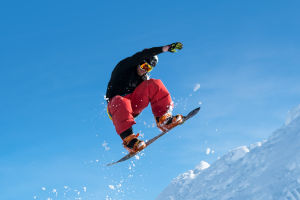Skiing is a sport that benefits both body and mind, offering the opportunity to spend a magical holiday in the mountains.
Connecting with nature, breathing fresh mountain air, and enjoying the freedom and fun are just some of the highlights of learning how to ski.
Getting Started: Everyone Has a First Time
If you're new to snow sports and feel a little nervous about skiing, it's perfectly normal. The best way to get started is to take a few lessons with a ski instructor. With their guidance, you'll gradually get the hang of moving on snow and learn how to stop safely. Don't worry—it's all about taking things step by step, and instructors are there to make the learning process easier and more enjoyable.
In the beginning, you'll learn how to move on snow, practice basic techniques, and understand the safety rules for skiing. Ski schools often have availability, but it's a good idea to book your first lesson in advance to ensure a smooth start.
The Right Age to Learn to Ski? Anytime!
Skiing is a sport that can be enjoyed at any age—whether you're in your 30s, 40s, or beyond. If you're in good physical condition and have the drive to learn, there's no reason to wait. While children may tend to pick it up faster, adults can absolutely succeed with some practice and patience. With the right guidance and consistency, skiing is an activity that can be accessible to everyone.
Techniques for Learning to Ski
First things first—make sure you have the right equipment. If you're a beginner, renting your gear is a smart choice. You'll need skis, boots, poles, and a helmet for safety. It's also essential to select skis that suit beginners, such as short-length all-mountain skis. As for boots, focus on comfort and ease of fit.
Dress appropriately for the cold with layers: a moisture-wicking base layer, a fleece or jacket as an intermediate layer, and a windproof, water-resistant outer layer. Arrive early for your lesson to get familiar with your gear and warm up before heading to the slopes. It may feel a bit awkward walking in boots, but soon you'll get used to it!
Moving on the Snow
When you're ready, start by getting familiar with the basics, like walking in skis, practicing balance, and learning to move one ski at a time. These are all essential building blocks to get comfortable on snow before moving onto more complex techniques.
Gliding on the Snow
Once you've gained some confidence, it's time to learn to glide. Start on a gentle slope, where you'll practice sliding and shifting your body to understand how the skis respond to your movements. This part of learning helps build control and balance, both key for skiing.
Braking
Mastering how to control your speed is an important skill. On a slight incline, you'll practice braking using the "snowplow" technique—spreading the tails of the skis apart while keeping the tips close. This will help you stop safely. It might take a little practice, but it's an essential part of the process.
Next Steps and Learning Timeline
Everyone progresses at their own pace, so it's hard to give an exact timeline. However, with consistent practice, you'll make noticeable progress. After one or two lessons, you should have a good understanding of the basics.
By the end of the week, you may be able to tackle beginner slopes on your own. Keep in mind, with time and persistence, you'll be able to enjoy skiing more and more, building up to more advanced techniques.
Skiing is all about enjoying the journey, so take your time and focus on having fun on the slopes!


